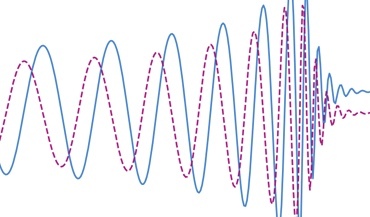 Gravitational memory and spacetime symmetries
Gravitational memory and spacetime symmetries
Symmetries of spacetime infinitely far away from gravitational fields may hint at new laws of nature
Fourier-transformed gravitational wave strain [4]:

Where M is a chirp mass, DL is a luminosity distance, A is the amplitude, Psi is the phase, and C is a geometric detector parameter. The amplitude and the phase are represented as post-Newtonian expansion series.
To the zero'th order,

Two neutron stars or black holes in a close binary system emit gravitational radiation and get closer and closer together, until they merge. Gravitational wave frequency evolves as a function of time and chirp mass [1]:

Sky resolution of laser interferometers (LIGO, Virgo, Kagra, etc.) depends on a gravitational wave frequency as [2]:

Selecting long segment durations in gravitational wave data analysis for terrestrial-based detectors leads to a higher frequency-domain resolution. However, at the same time, it may lead to a loss of SNR at high frequencies due to sidereal rotation of the Earth with respect to a gravitational wave source. If we can accept only SNR losses of 10% or less, we should constrain the Fourier segment duration by [3]:

 Gravitational memory and spacetime symmetries
Gravitational memory and spacetime symmetries
Symmetries of spacetime infinitely far away from gravitational fields may hint at new laws of nature
 The nanohertz gravitational wave background
The nanohertz gravitational wave background
Is the common-spectrum process observed with pulsar timing arrays a precursor to the detection?